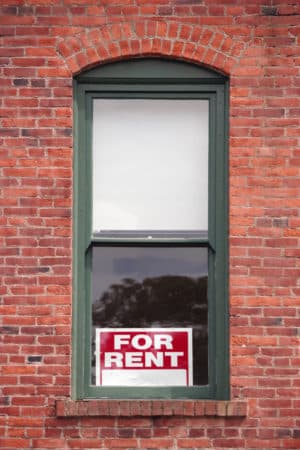
Boston Mayor Michelle Wu may have public support to propose an “anti-gouging” form of rent regulations that aims to prevent double-digit rent increases.
If you want to see a Boston real estate developer go white in the face, just utter the phrase “rent control.”
The term applies to caps on rental rates and is a practice that picked up support following World War II when soldiers returned home and needed an affordable place to live. The practice eventually phased out in most of the country but picked up steam again locally in recent years, as Boston became one of the most expensive cities in the U.S. to rent an apartment.
Massachusetts developers may have thought the concept was in the rear-view mirror after voters abolished the practice statewide in 1994, yet Boston appears to be on the brink of rolling out some form of rent control.
But it may not be the rent control of yore where sprawling apartments in New York City – for some who have continuously lived since 1971 in a designated unit built prior to 1947 – might rent for under $1,000 a month despite the city average surpassing $5,000 in June, per a Miller Samuel and Douglas Elliman report cited by CNBC.
Wu’s Promise to Voters
Boston Mayor Michelle Wu, elected last year by a wide margin, campaigned on the promise of “protections to stabilize tenants” while also rezoning the city to allow for continued growth. Since taking office, Wu brought housing advocates, academics and market-rate housing developers together in a task force to advise her on putting that promise into effect.
Five listening sessions later, the committee is gathering public comment through Sept. 16 and getting ready to assemble draft recommendations. But the city and task force aren’t saying much in the way of what those recommendations might be.
“In March, Mayor Wu announced a Rent Stabilization Committee to examine successful rent stabilization programs in other cities and consider measures to stop the displacement of Boston residents,” Tim Davis, the deputy director for policy development and research in the Mayor’s Office of Housing, said in a statement. “While this public comment period is ending on September 16th, this is just the first step in the process, as we review the comments and discuss potential policy options with the Rent Stabilization Advisory Committee. There will be further opportunities for public input in the fall, on draft recommendations.”
Whatever the result, Boston would be the first city to test what could be growing openness to the concept of local-option rent regulations among the candidates for governor. Democratic nominee Maura Healey has explicitly endorsed the idea. And although Republican nominee Geoff Diehl has not publicly made his opinion known, his pick for lieutenant governor, Leah Cole Allen, expressed openness to ideas of “rent stabilization” during a Greater Boston Real Estate Board candidate forum in August.
‘Anti-Gouging’ Popular in Other Cities
But notes from public comment sessions as well as how rent stabilization efforts moved ahead in cities like Portland, Oregon, and St. Paul, Minnesota, signal a potential path for how the policy might shape up in Boston. Think more along the lines of “anti-gouging” than rent control, experts interviewed for this story said – and, yes, there are loopholes to keep the development community placated.
“The details matter more than the label, because ‘rent control’ can mean very different things,” said Alex Armlovich, a senior housing policy analyst at the market-oriented Niskanen Center.
Important factors in not driving away the incentive to develop housing include an exemption to rent stabilization on new-construction buildings for a set period. This helps developers recoup costs and get a return on their investment before moving onto their next deal.
“Sometimes it’s kind of a rolling exemption for 15 years so that buildings can go through that first round of investment return, probably go through a refinancing cycle, and then it is rolled into the controlled [housing] stock,” said Edward Goetz, director at the University of Minnesota’s Center for Urban and Regional Affairs.
Carveouts Common for Many Properties
New construction exemptions received both support and concern from residents during the public comment sessions to date, according to listening session notes released by the city of Boston. Other carveouts include vacancy decontrol, where rent can reset to market-rate levels when a tenant moves out and then returns to rent stabilization guidelines with the new tenant.
“This is something that landlords love and that tenants and tenant advocates hate,” Goetz said. “There are lots of different features of rent stabilization nowadays that make it quite different than a kind of monolithic price control that [commercial real estate] industry people really fear the most.”
Some forms of this “rent control 2.0” cap rent hikes at annual inflation levels plus a certain percentage.
The most recent listening session notes from late July show some support for allowing rent increases to coincide with inflation plus 5 percent. Oregon’s rent stabilization allows for rent hikes tied to the rate of inflation plus 7 percent.
“They basically call it an anti-gouging law,” Armlovich said. “It’s kind of preventing those really high – kind of what the law calls ‘egregious rent increases’ like a 30 percent increase – which kind of are de facto evictions. Unless you’re a high-income person, a 30 percent increase is probably an eviction.”
Developers ‘Curious,’ But Cautious
Some of these may seem like rational ways to combat Boston’s high cost of living and making the city a more comfortable place to live for those who aren’t making well into six-figure salaries. But leaders at one of the region’s largest commercial real estate groups – NAIOP Massachusetts – cautions even well-meaning compromise can stunt incentives to develop housing in a notoriously high cost-to-build market like the Bay State.
“While NAIOP is curious to see the home rule petition when it is released, the evidence across decades of academic literature shows that even the best-intentioned rent control policies have unintended harmful effects on the overall housing market – and the very populations they intent to support,” said Anastasia Nicolaou, vice president of policy and public affairs at NAIOP Massachusetts. “Even if rent control appears to help renters in stabilized units in the short run, in the long run It decreases market affordability and often fuels gentrification.”
NAIOP is concerned policies like rent control can “detrimentally” impact housing starts across the entire region, especially since Boston typically leads the way in housing production in New England. Construction costs are up as much as 40 percent over pre-pandemic levels in Massachusetts and have led developers to consider “delaying, or even stopping some projects across the commonwealth,” Nicolaou added.
The law of supply and demand once again rears its head and needs to also be factored into any rent stabilization push, experts say, even if rent control “takes the sting out” for anyone living in an affected unit.
“The fundamental problem in Boston is housing scarcity,” Armlovich said. “So, we need to use the tenant energy around rent control to support a coalition that actually addresses scarcity at the same time as a modern, reasonable rent stabilization ordinance. Mary Poppins didn’t just say ‘a spoonful of sugar’ – you also have to take the medicine, and rent control without zoning for abundance is just the sugar.”





